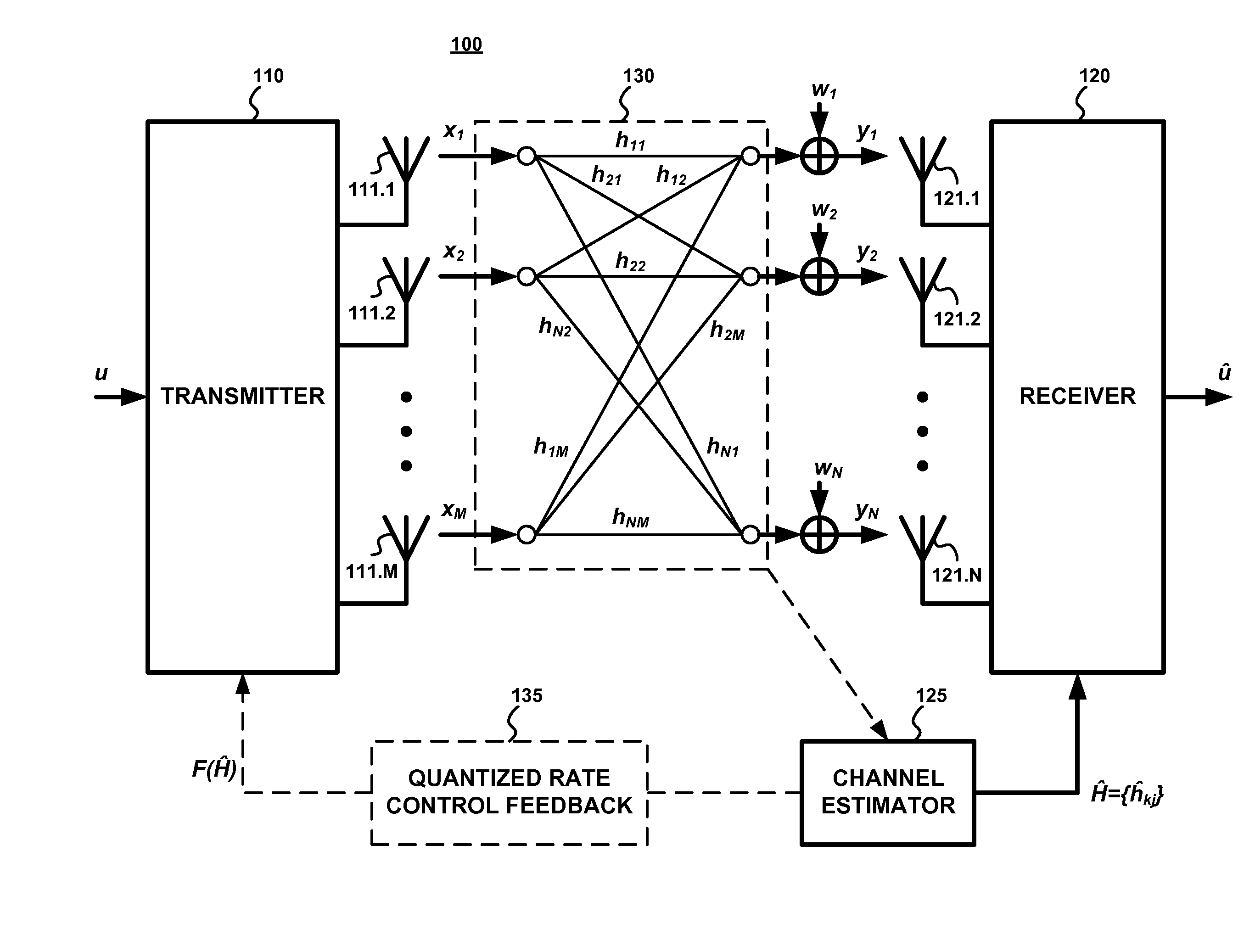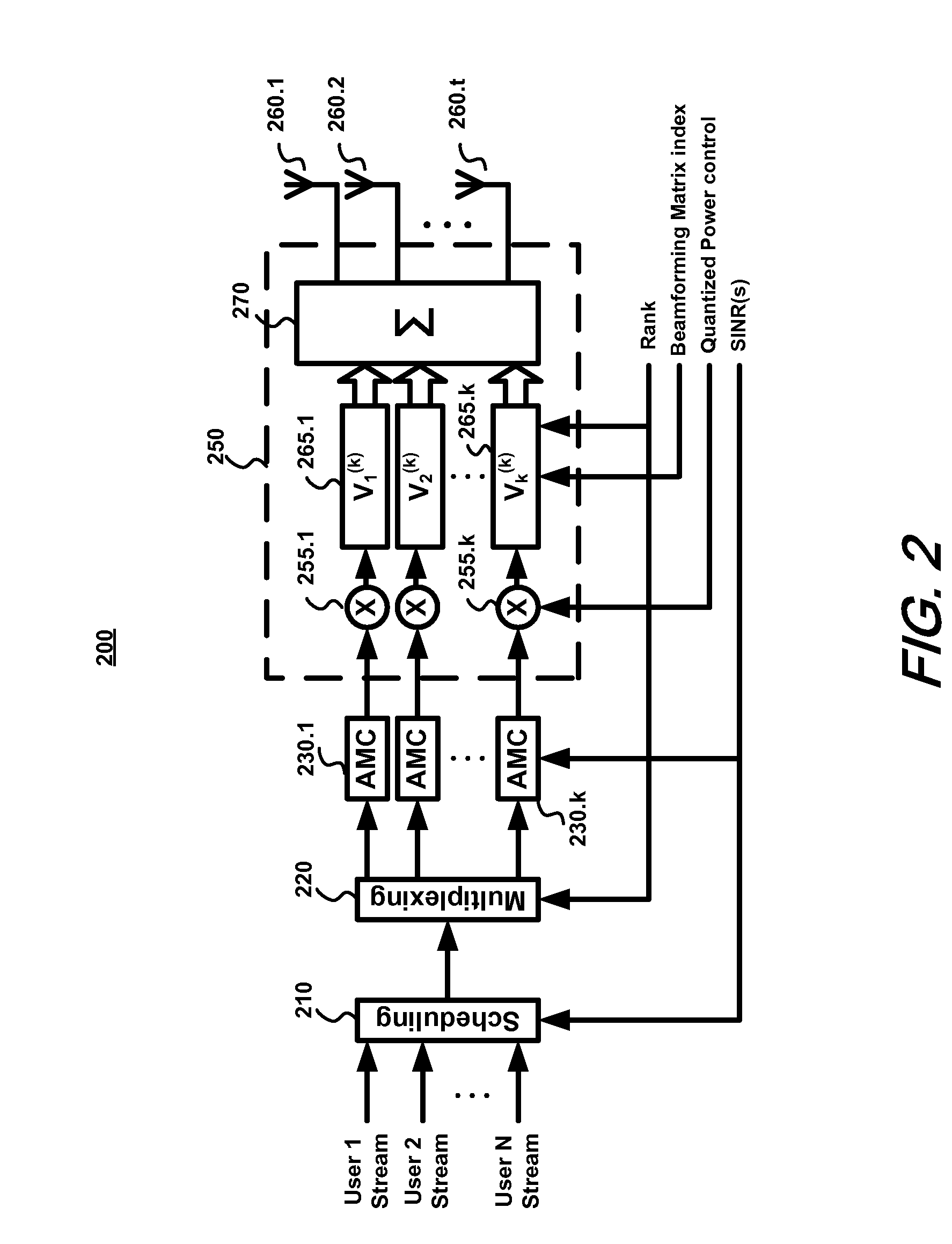Structured codebook and successive beamforming for multiple-antenna systems
a technology of multiple antennas and codebooks, applied in the field of wireless communications, can solve the problems of significant performance degradation, high complexity of high-rate communication systems, and the increase of the bandwidth of the system, and achieve the effect of low complexity and low feedback ra
- Summary
- Abstract
- Description
- Claims
- Application Information
AI Technical Summary
Benefits of technology
Problems solved by technology
Method used
Image
Examples
Embodiment Construction
[0032]An exemplary multiple-antenna communication system 100 with quantized feedback is schematically shown in FIG. 1. A transmitter 110 transmits from t transmitting antennas 111.1-111.t over a fading channel 130 to r receiving antennas 121.1-121.r coupled to a receiver 120. A channel estimator 125 provides an estimate of the channel 130 to the receiver 120. The channel estimate is also quantized and provided to the transmitter 110 via a quantized rate control feedback channel 135.
[0033]For purposes of analysis, a flat fading channel model is assumed in which the channel remains constant for each block of transmission. Furthermore, the feedback channel 135 is assumed to be an error-free, zero-delay feedback channel from the receiver to the transmitter, carrying B bits of information about the channel realization every frame.
[0034]For a multiple-antenna system with r receive and t transmit antennas the baseband channel model can be expressed as follows:
Y=HX+W, (1)
where Y is the r×...
PUM
 Login to View More
Login to View More Abstract
Description
Claims
Application Information
 Login to View More
Login to View More - R&D
- Intellectual Property
- Life Sciences
- Materials
- Tech Scout
- Unparalleled Data Quality
- Higher Quality Content
- 60% Fewer Hallucinations
Browse by: Latest US Patents, China's latest patents, Technical Efficacy Thesaurus, Application Domain, Technology Topic, Popular Technical Reports.
© 2025 PatSnap. All rights reserved.Legal|Privacy policy|Modern Slavery Act Transparency Statement|Sitemap|About US| Contact US: help@patsnap.com



